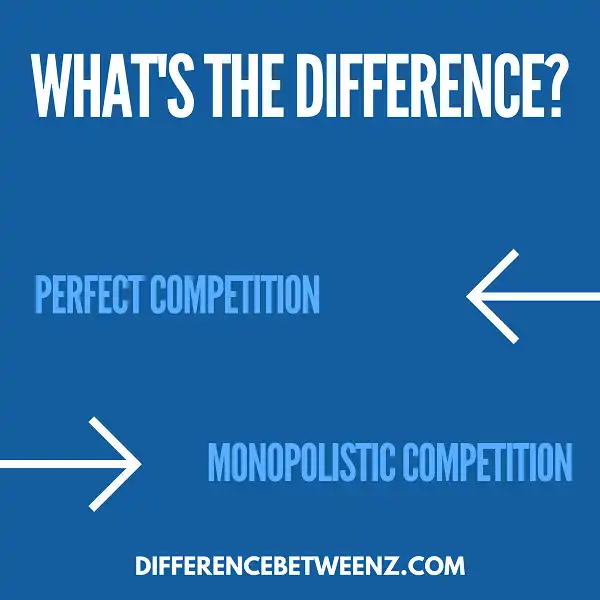In order to understand the different economic concepts of perfect competition and monopolistic competition, it is important to first define them. Perfect competition is a market structure where there are many firms producing identical products, and consumers have perfect information about the prices of all the products. Monopolistic Competition, on the other hand, is a market structure where there are many firms producing similar but not identical products, and consumers do not have perfect information about prices.
What is Perfect Competition?
Perfect competition is an economic situation in which there are many buyers and sellers of a product, and no one buyer or seller has enough power to influence the market price.
- This situation leads to a market price that reflects the true underlying cost of production. Perfect competition is often used as a theoretical ideal because it is difficult to find real-world examples that perfectly match all the conditions.
- However, many markets come close to perfect competition, such as the market for agricultural products or for certain types of financial services. In perfect competition, firms are price takers, meaning that they must accept the prevailing market price for their products.
- They cannot influence prices by cutting prices or offering discounts, because other firms will quickly undercut them. As a result, firms in perfect competition must focus on producing high-quality products at a low cost in order to be profitable.
What is Monopolistic Competition?
- Monopolistic competition is a type of market structure where there are many firms that sell similar, but not identical, products. Monopolistic competition exists when firms have some pricing power, but not enough to charge a price that significantly exceeds the cost of production. Monopolistic competition is characterized by strong product differentiation and high levels of advertising and promotion.
- Because each firm in a monopolistic competitive market is vying for a larger share of the market, there is intense pressure to innovate and offer unique products. Monopolistic competition can be found in markets ranging from fast food restaurants to retail clothing stores.
- While monopolistic competition falls somewhere between perfect competition and monopoly on the spectrum of market structures, it is generally considered to be more efficient than a monopoly. Monopolistic competition typically results in lower prices and greater variety for consumers.
Difference between Perfect Competition and Monopolistic Competition
Perfect competition is a theoretical market structure in which a large number of small firms compete against each other on the basis of price. Monopolistic competition is a type of market structure that falls between perfect competition and monopoly.
- In monopolistic competition, there are many sellers, but each one has a small share of the market. This type of market is characterized by high levels of differentiation and moderate levels of barriers to entry.
- Although both types of market structures have their own advantages and disadvantages, there are some key differences between perfect competition and monopolistic competition.
- Perfect competition leads to lower prices and higher output, while monopolistic competition can lead to higher prices and lower output. Perfect competition results in all firms earning zero economic profit in the long run, while monopolistic competition may result in some firms earning positive economic profit. Finally, perfect competition results in perfect information, while monopolistic competition leads to imperfect information.
Conclusion
In a nutshell, perfect competition is a market structure where there are many small firms producing identical products with zero barriers to entry. This means that new firms can easily enter the market and any firm can leave without causing too much disruption. Monopolistic competition, on the other hand, is a market structure characterized by many producers and many consumers of differentiated products. This means that each producer offers a unique product that isn’t available at every store. There are some barriers to entry in this type of market (e.g., patents, economies of scale), but they aren’t as high as in a monopoly.


